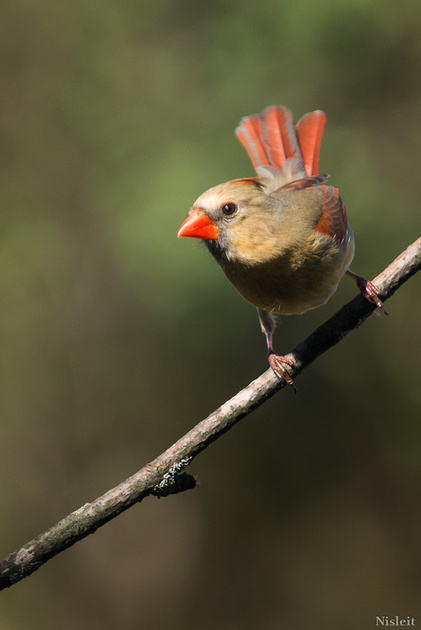Why Photography Is so Easy to Do yet Difficult to Master
Photography has an inherent false ease of entry. Without understanding anything, you can pick up a camera and make a picture.
This is certainly an exciting gift. And certainly if the camera is doing the recording, it must be responsible for the quality of your photos. After all, why would you need to know anything about photography when the camera makes the calculations? You've already done the hard work of seeing something exciting, and you assume the camera sees the same thing and shares your passion and vision, and all you need do is press the button.
But chances are you, along with multitudes of other beginners, realize after repetitive disappointment, despite the tremendous technology built into DSLRs, that something else is going on, something you're not quite grasping. Also, some photographers make interesting images out of things that in reality are uninteresting. What gives?
That would be the photographer.
Imagine a great painter, Claude Monet, for example. He steps outside to a beautiful garden with willows and water lillies. Since he doesn't have a camera, he must render his vision in paint on canvas. But what is it that makes the finished painting so interesting and compelling?
Perhaps it's color, the way different values play with each other, shape and perceived form and depth, and -- dare I say it? -- intelligent design.
Did the painting design itself? Did the brush decide what paint to put on? Did the easel create the composition?
No. Monet didn't simply hope the equipment knew what it was doing or what he wanted. The canvas was just a canvas. The brush was just a tool. Monet chose what brush to use, what paint to put on the brush, what design to brush onto the canvas and how. In those decisions, not the equipment, lies the art of painting as much as the art of photography.
This is the way professionals approach photography. You can't just throw gear at something and hope it all turns out. But it's easy to think you can. Photography lends a false sense of ease to image making, where it's easy to expect that a light recording machine with a built-in scene recognition matrix meter will simply render a scene as amazingly as it looks and feels to you. It's all right there in front of the camera, so why can't the camera just reproduce something exciting exactly the way you saw and felt about it? A few reasons.
The human eye sees a great deal of detail, a wide angle of view, with everything in focus and essentially all ranges of brightness perceived, and colors always look accurate no matter what the light source. It's an incredible machine.
The camera, however, is a limited machine by comparison. It can record only a fraction of the range of brightness the eye sees. Different lenses change the angle of view from incredibly narrow to incredibly wide. Different exposures record the same light in different ways. Colors render differently depending on the light source. And the list of differences is nearly endless.
And there's one other element you might have picked up on: the human element. The photographer feels excitement, mood and senses the drama of light and shadow, composition. The camera doesn't. The way the eyes and brain work together to create experiences is unique to life and something no camera can record.
The limitations are essential to understanding the art of photography. No camera is capable of duplicating the eye-brain-heart experience that we know as reality. Cameras record only a tiny fraction of reality -- an impression of it -- so in choosing what and how to record, the art emerges. If you let the camera make all the choices, you're stuck with snap shots, so if you want anything to do with photography as an art, you need to take control of it.
Good photography isn't about a simple capture of something you see. A snap shot can be, but art is entirely different. It's about filtering reality through a more limited tool set, not capturing what you see but telling a story about it, selecting what to record and how to record it, just like a painter.
So, the game is similar to painting; the photographer's paint is the light. And since the game is similar, the rules are similar. Artistic rules like composition, shape, form, tonality, contrast, perceived depth, design -- all come into play in photography much the same way they did in classical painting. In fact, classical painting is where photography borrowed much of its aesthetic guidelines from.
By selecting light, recognizing its direction and quality, color, by crafting composition, perceived depth, mood and hundreds of other little things, you become like a painter, recording your vision with light instead of paint. You can even use these fundamentals and artistic control to make interesting photos out of uninteresting subjects.
There's a lot more to it than you thought, isn't there? And not much of it has to do with the equipment itself. Like in any art, the equipment is only something you must overcome, and the rules are there to help you remember what makes good art. Not just any photo is good, but there are particular reasons that have to do with undeniable nature. You may not even know how you made a good picture, or even what in particular you like about it, or why your eye wants to examine some things more than others, but if you learn the rules of art, you may recognize some of them in your best photos.
So you see a great photo is not simply pressing the button. A great photo is a story told with light, a series of good decisions made by the photographer about something in reality that could have been just as easily interesting as uninteresting to the naked eye. Just as it's difficult to accidentally tell a bestselling story, or have a computer come up with one, it's difficult to accidentally make a visually compelling photo, and there's no camera that can automatically do it for you. You must decide what to put into the camera and how to visually tell the story you want.
If you want to make better pictures, make better decisions.

 Above: The blurred background, the limited contrast range and deep shadows, the narrow field of view are all elements that are too defined for the human eye and brain to experience without the tools of photography. If you were to look this closely at the bird with your eyes, you would see a much wider field of view with much more in focus and a greater range of brightness. Reality is in front of you every day. But when you decide how to filter it through the tools of photography, you're able to tell rich, compelling visual stories in an artistic way.
Above: The blurred background, the limited contrast range and deep shadows, the narrow field of view are all elements that are too defined for the human eye and brain to experience without the tools of photography. If you were to look this closely at the bird with your eyes, you would see a much wider field of view with much more in focus and a greater range of brightness. Reality is in front of you every day. But when you decide how to filter it through the tools of photography, you're able to tell rich, compelling visual stories in an artistic way.

